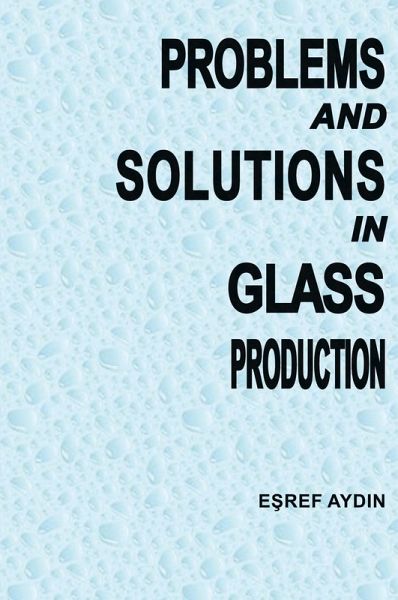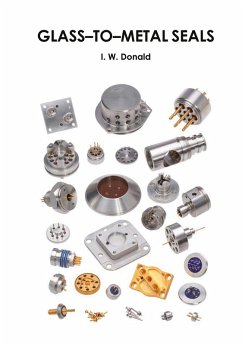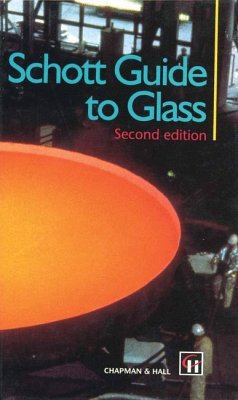
Problems and Solutions in Glass ProductIon
Versandkostenfrei!
Versandfertig in 1-2 Wochen
45,99 €
inkl. MwSt.

PAYBACK Punkte
23 °P sammeln!
This book is a final comment on what the author has to say about glass production problems. The problems are numerous with small or big impact. Those chosen are everyday problems and will remain at the top of the agenda. Glass is a high technology product for many applications, but a commodity product for all walks of life. It has proven itself as the most harmless product in comparison to its so-called alternatives. Glass has a long history behind it and undoubtedly has a bright future as a material. Some problems have a long history, but technological developments eliminate most of them to s...
This book is a final comment on what the author has to say about glass production problems. The problems are numerous with small or big impact. Those chosen are everyday problems and will remain at the top of the agenda. Glass is a high technology product for many applications, but a commodity product for all walks of life. It has proven itself as the most harmless product in comparison to its so-called alternatives. Glass has a long history behind it and undoubtedly has a bright future as a material. Some problems have a long history, but technological developments eliminate most of them to satisfy customer requirements. The behaviour of glass in the environment it is used, requires special attention and care. Although glass is reckoned to be neutral and resistant, it may deteriorate in quality if necessary measures are not taken. Daily and regular glass furnace observation is very important for best management. Energy, raw materials and labour are the main cost items in glass production. This book does not claim to cover all the fundamentals of glass. It is intended to uncover the strong conservative look that is shed on glass production since early times. Nothing remains to be secret or confidential at this time of easy access to information. Several problems have been summarised in Chapter 1, raw material problems have been dealt with in Chapter 2; Chapter 3 is a follow up which deals with homogeneity, batch reactions and furnace observations. Batch related problems are not by any means of lesser importance, all are tackled one by one in Chapter 4. Glass defects are iterated in Chapter 5. There is a wealth of information about defects, related origins and proposals for solutions. Tin bath and related problems are examined in Chapter 6, by making extensive use of available literature. Tin bath faults are dealt with in detail. Satisfactory information has been condensed about tin bath chemistry. There are some features which are completely new. Post-production problems of glass products (float, container and tableware) are given in detail in Chapter 7. The reader will have noticed by scanning through the pages of this book that there is a good deal of bias on float glass. This is because the author has become more specialised in this aspect.












